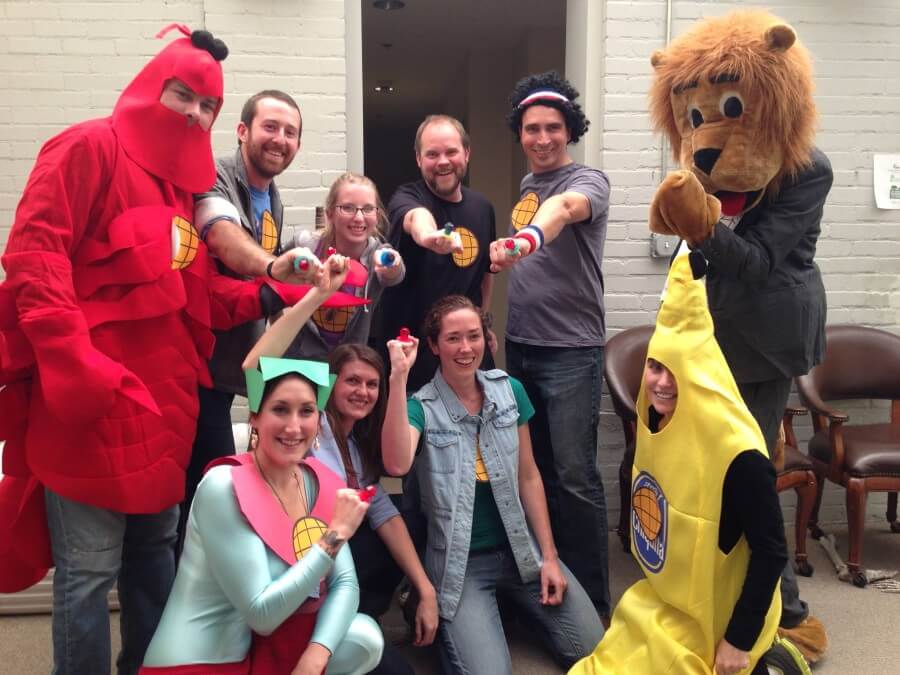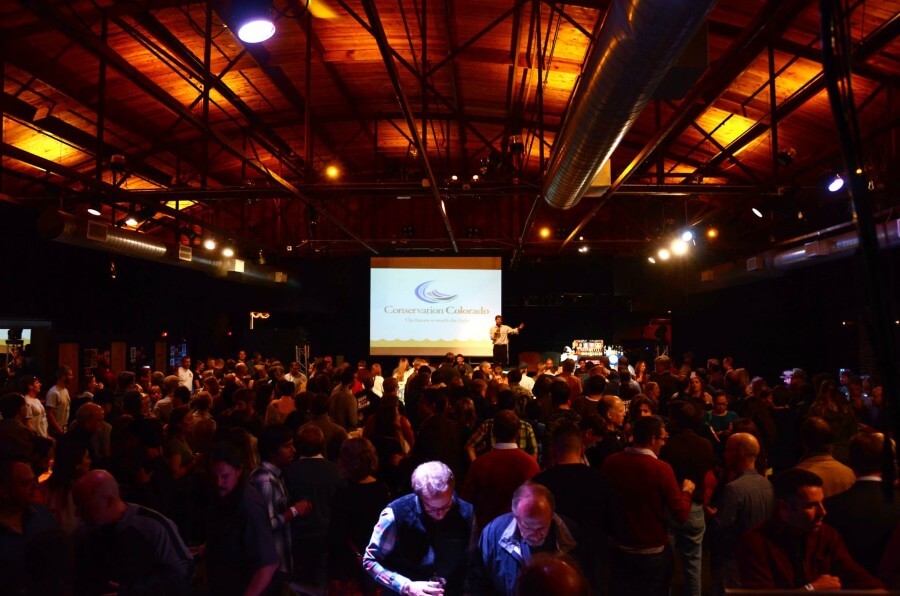Written by Eliza Carter
Public land seizure has been making headlines in Colorado and across the West for years now, and lots of us aren’t quite sure what to make of it. This confusion is understandable; the logic behind the movement is not particularly coherent and there are a lot of different influences at play. Terms and names are often dropped, and their relationship to one another is not always clear — what or who is ALEC? What is ALC? What does this have to do with Cliven Bundy?
And last but not least, how exactly would this idea work?
We intend to clear all this up for you.
What is public land seizure?
Short answer: Nonsense.
Long answer: Public land seizure is essentially the idea that land currently managed by national agencies should be owned by the state. The legal validity, financial prudence, and feasibility of this argument have all been debunked several times over, and yet it persists. It stems from ideological values that resemble those of Cliven Bundy, the law-breaking Nevada rancher who made headlines last year for engaging in an armed standoff with BLM officials because he didn’t want to pay grazing fees. His basis for this was simply that he doesn’t believe that the American government is legitimate.
We’ve seen this before — in the “Sagebrush Rebellion” of the late 1970s and early 1980s, ranchers rebelled against the federal government because of grazing fees that they felt were too high, despite the fact that they are usually a fraction of the average private leasing cost.
If this reasoning seems bizarre, that’s because it is. The real reason for these efforts is not a principled stand against federal overreach, it’s a thinly veiled push to privatize and profit off our land, mostly through extractive industries.
Yeah, but there must be some grounds on which people are arguing for it.
Short answer: Not really.
Long answer: There is an argument, but it disintegrates under even the lightest scrutiny. Proponents say that, in Western states’ enabling acts or constitutions, the federal government promised to give the land back to the states. A quick glance at any enabling act proves this is just not true. For example, here’s Colorado’s:
“That the people inhabiting said Territory do agree and declare that they forever disclaim all right and title to the unappropriated public lands lying within said Territory.”
Seems pretty straightforward.
So how would it work?
Short answer: It wouldn’t.
Long answer: Public lands require a great deal of costly management, which would be an enormous burden for cash-strapped state governments. As Fort Lewis College Professor Andrew Gulliford recently detailed, the Utah government spent $450,000 to discover that seizure would cost around $300 million. That price tag, which is currently handled by the federal government, would either be placed on state taxpayers, or would have to be generated by dramatically increasing development on our public lands.
Currently, our public lands create a great deal of revenue through our recreation and tourism economies, prompting the outdoor industry to become more active in fighting for public lands. In Colorado alone, recreation generates $13 billion per year in spending.
If the state were to seize public land, it would have to find a way to make up the budget shortfall from the aforementioned staggering cost of management. The most obvious way to do that is to sell it off for private development, which would inevitably lead to access closures and environmental degradation.
Even if the land weren’t immediately sold, simply becoming owned by the state is a serious threat to access; while federal lands are required to be available for multiple uses, state lands must be managed for profit. So public land seizure would unavoidably result in decreased access to our favorite places to hike, camp, fish, and hunt. Worse, it would rob future generations of those opportunities.
What do ALEC, ALC, and the Koch brothers have to do with this?
Short answer: They’re funding it so they can maximize private profit on our public lands.
Long answer: The American Legislative Exchange Council (ALEC) has been involved in this since the beginning. It is a special interest group that creates “model legislation” for mostly conservative lawmakers, and it is notorious for bringing state legislators together with industry representatives in closed-door sessions. Every public land seizure bill we have seen yet can be traced to ALEC’s unsavory origin. Its corporate advisory board includes fossil fuel groups like ExxonMobil, Altria, and Koch Industries, and has pushed public land seizure bills across the country. Sound like a dangerous combination? It is.
The American Lands Council (ALC) is a similar corporate front group whose guiding mission is to seize control of public lands. It pays state legislators handsomely to push their agenda in state legislatures. ALC’s members, which include county commissions, sheriff’s offices, and individuals across the country, pay fees in return for the opportunity to profit off the land once it has been transferred.
What’s Ahead
Unfortunately, despite the abundance of conclusive evidence that seizing public lands is a terrible idea, we are seeing it continue to rear its ugly head at the state level and in Congress.This year’s legislative session saw several reckless bills that would have furthered the seizure agenda. Luckily, they were ultimately defeated thanks to resounding opposition from Colorado’s businesses and outdoor recreation community as well as our legislative champions’ tireless efforts. Coloradans know this is wrong for us — we just need to make sure our leaders aren’t being swayed by special interests.


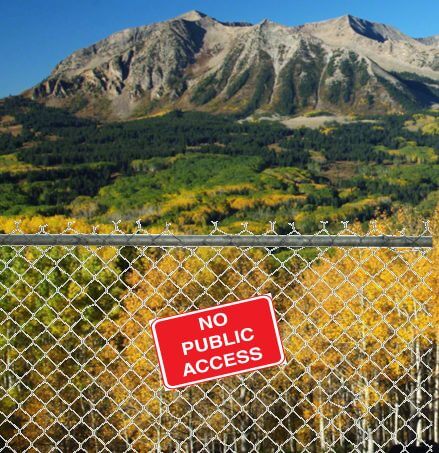
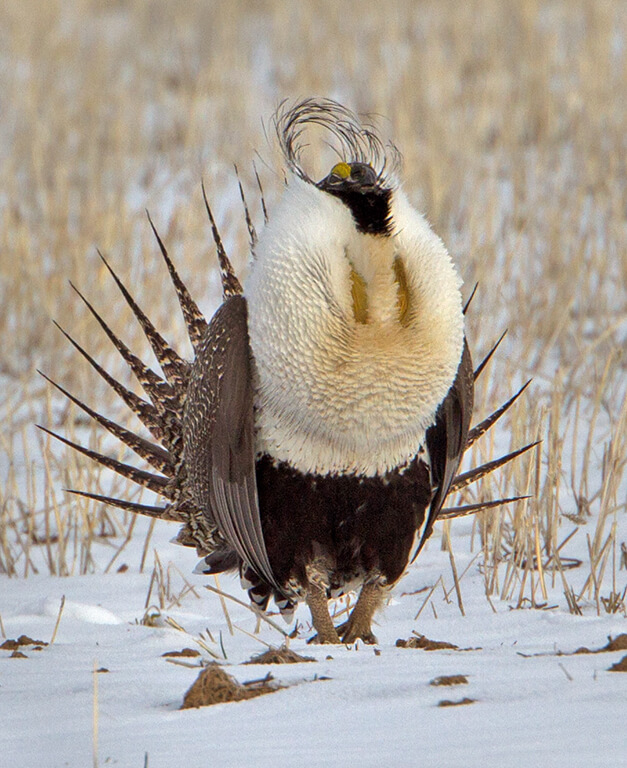 Grouse have been called “sage chicken.” Historically, these relatively large birds provided an important protein source to people of the Western United States. They were once so prolific that explorers described how flocks would “darken the skies” and many a settler made it through hard times subsisting on the bird. Last year Colorado had a two-day hunting season to allow people to experience the traditional custom of harvesting grouse for a food source.
Grouse have been called “sage chicken.” Historically, these relatively large birds provided an important protein source to people of the Western United States. They were once so prolific that explorers described how flocks would “darken the skies” and many a settler made it through hard times subsisting on the bird. Last year Colorado had a two-day hunting season to allow people to experience the traditional custom of harvesting grouse for a food source.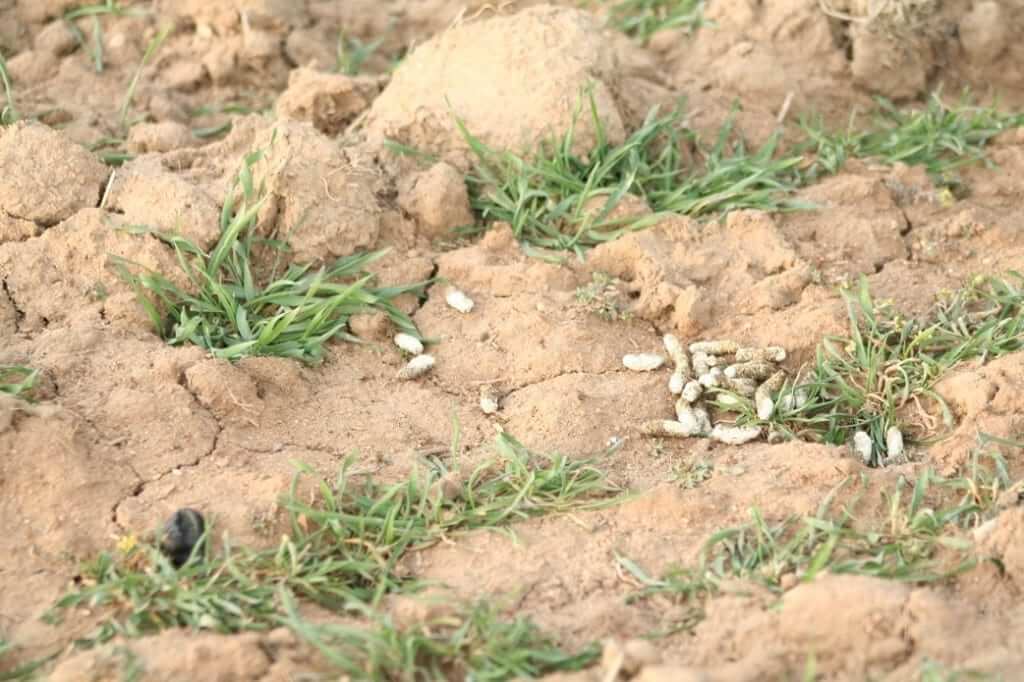 Grouse have four types of scat or poop called castings: the tar like secretions of sage oil, the pellets from a mix of sage and forbes, the runny droppings from forbes and insects and the large “clockers” produced from hens who leave the nest only once or twice a day when sitting on the nest.
Grouse have four types of scat or poop called castings: the tar like secretions of sage oil, the pellets from a mix of sage and forbes, the runny droppings from forbes and insects and the large “clockers” produced from hens who leave the nest only once or twice a day when sitting on the nest.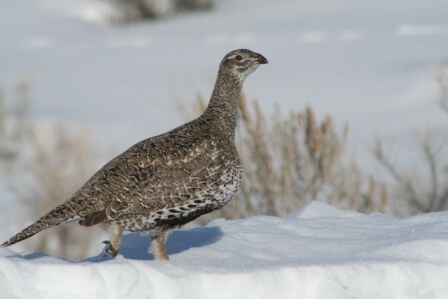 Mating season is early to mid-March until mid to late May. Females lay between 8-12 eggs and are responsible for creating the nest and brood rearing. Greater sage grouse do not pair-bond, they are not monogamous. Outside of mating, males do not take part in raising the young. Eggs and nests can be lost due to disturbances such as bad weather and predators such as ravens, red fox, raccoon and coyote.
Mating season is early to mid-March until mid to late May. Females lay between 8-12 eggs and are responsible for creating the nest and brood rearing. Greater sage grouse do not pair-bond, they are not monogamous. Outside of mating, males do not take part in raising the young. Eggs and nests can be lost due to disturbances such as bad weather and predators such as ravens, red fox, raccoon and coyote.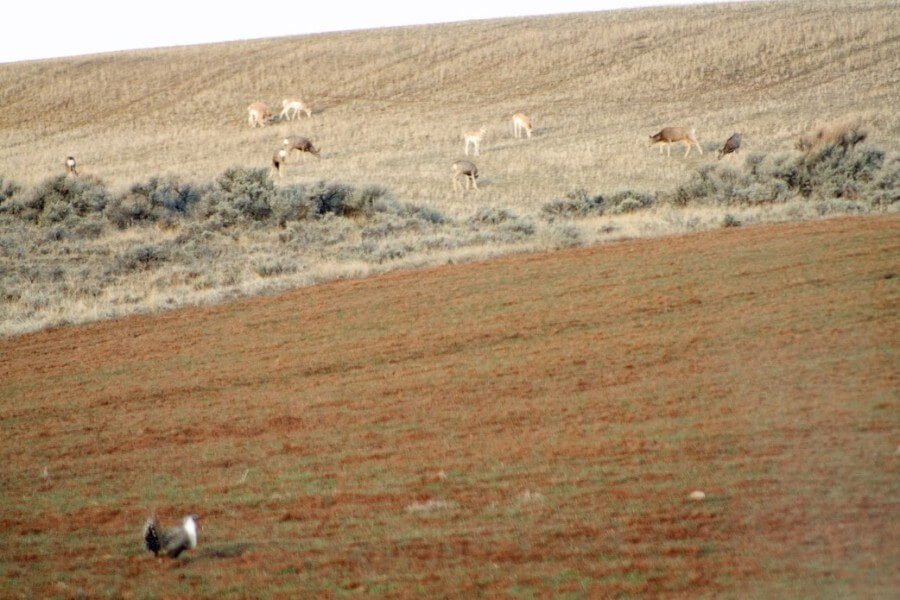 Mating occurs on a landscape known as a “lek.» Leks are ancestral spots visited each year where the males dance to attract mates. Lek is a Nordik word that loosely translates to mean dance hall or dance floor. All leks have limited vegetation and afford 360 degree view for the birds to watch for Eagles – the predator most likely to kill a mature leking bird. Leks are surrounded by sage in succession (baby sage to granddaddy sage all play a role in the life cycle). Birds may travel from over 3-6 miles away to get to this lek. At this time attempts to relocate birds from one lek to another have failed. Leks that are disturbed and abandoned do not usually result in birds using a nearby lek. We do not yet understand why. Protecting leks and the 3-6 miles surrounding these breeding grounds is a priority to enable conservation of the bird. The lek we are viewing is one of the most populated by Greater sage grouse in the State of Colorado. It is a field that has been cultivated since 1912, but grouse danced long before it was a cultivated field.
Mating occurs on a landscape known as a “lek.» Leks are ancestral spots visited each year where the males dance to attract mates. Lek is a Nordik word that loosely translates to mean dance hall or dance floor. All leks have limited vegetation and afford 360 degree view for the birds to watch for Eagles – the predator most likely to kill a mature leking bird. Leks are surrounded by sage in succession (baby sage to granddaddy sage all play a role in the life cycle). Birds may travel from over 3-6 miles away to get to this lek. At this time attempts to relocate birds from one lek to another have failed. Leks that are disturbed and abandoned do not usually result in birds using a nearby lek. We do not yet understand why. Protecting leks and the 3-6 miles surrounding these breeding grounds is a priority to enable conservation of the bird. The lek we are viewing is one of the most populated by Greater sage grouse in the State of Colorado. It is a field that has been cultivated since 1912, but grouse danced long before it was a cultivated field.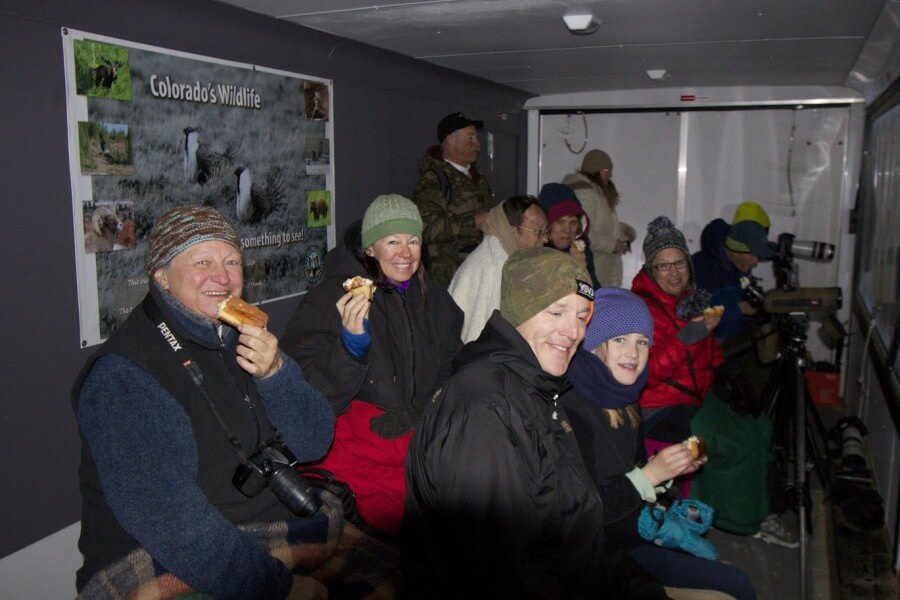 It is winter and you should expect to be cold. But trust me, at the end of the day, your senses will be rewarded with such a special event and you will tell the story over and over. Be ready for a great adventure — the staff will greet you and be very upbeat even with the very early morning. They will drive out of Craig some 30 miles or more as these special birds need a lot of space. So bring your best attitude for this new adventure and be ready to go.
It is winter and you should expect to be cold. But trust me, at the end of the day, your senses will be rewarded with such a special event and you will tell the story over and over. Be ready for a great adventure — the staff will greet you and be very upbeat even with the very early morning. They will drive out of Craig some 30 miles or more as these special birds need a lot of space. So bring your best attitude for this new adventure and be ready to go.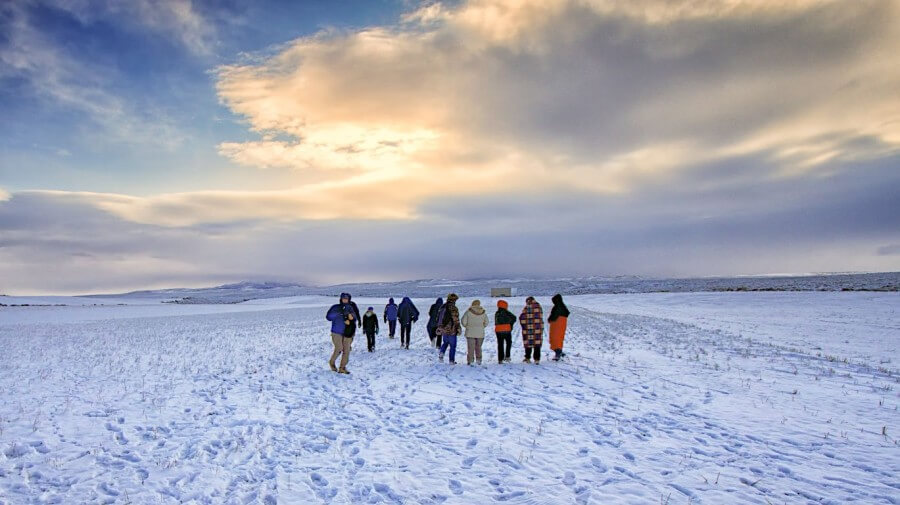
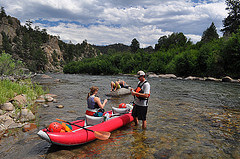 Browns Canyon was designated a national monument by President Obama using his authority under the 1906 Antiquities Act, a tool used by most American presidents since it was first wielded by Theodore Roosevelt to protect Devils Tower in Wyoming. Since that time, it has been used to protect monuments large and small, places cultural and wild, including the Grand Canyon, Grand Tetons and our own Dinosaur National Monument.
Browns Canyon was designated a national monument by President Obama using his authority under the 1906 Antiquities Act, a tool used by most American presidents since it was first wielded by Theodore Roosevelt to protect Devils Tower in Wyoming. Since that time, it has been used to protect monuments large and small, places cultural and wild, including the Grand Canyon, Grand Tetons and our own Dinosaur National Monument.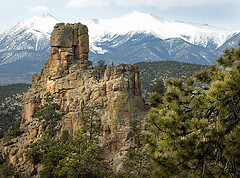
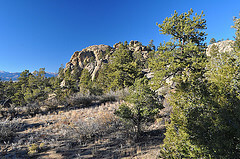 Finally, last year a legal settlement in the courts brokered protection for the summit of Northwest Colorado’s wildlife-rich Roan Plateau, drawing a protracted legal battle to a close, with all parties agreeing that the mesa top must be protected from drilling.
Finally, last year a legal settlement in the courts brokered protection for the summit of Northwest Colorado’s wildlife-rich Roan Plateau, drawing a protracted legal battle to a close, with all parties agreeing that the mesa top must be protected from drilling. To everyone who made phone calls,
To everyone who made phone calls, 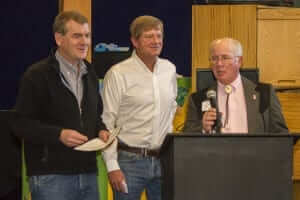 Please join us in thanking Congressman Tipton and Senator Bennet for their incredible leadership on Hermosa Creek, and stay tuned for opportunities to get out and play in the Hermosa area with us soon.
Please join us in thanking Congressman Tipton and Senator Bennet for their incredible leadership on Hermosa Creek, and stay tuned for opportunities to get out and play in the Hermosa area with us soon. The ten year long battle to protect the Roan Plateau is finally over. The conservation community finally won the fight to keep the 54,000 acre Roan Plateau from becoming an industrial zone.
The ten year long battle to protect the Roan Plateau is finally over. The conservation community finally won the fight to keep the 54,000 acre Roan Plateau from becoming an industrial zone.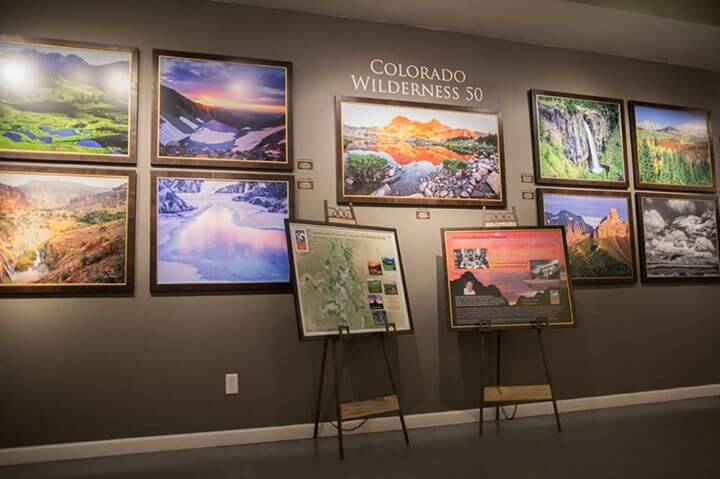 This year marked the 50th anniversary of the Wilderness Act, and boy, did we celebrate. We held events across the state from July to November to raise awareness about the 3.6 million acres of Colorado’s most sublime wildlands that are set aside as wilderness areas.
This year marked the 50th anniversary of the Wilderness Act, and boy, did we celebrate. We held events across the state from July to November to raise awareness about the 3.6 million acres of Colorado’s most sublime wildlands that are set aside as wilderness areas.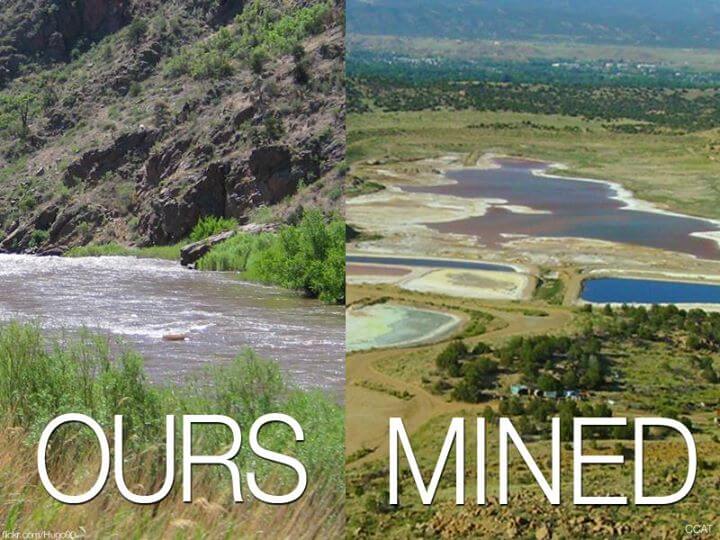 In April we were thrilled to help pass legislation that will finally clean up groundwater contamination in the Lincoln Park neighborhood of Canon City. After 30 years of pollution and indifference from Cotter Corporation, Coloradans living in its shadow were finally granted the right to clean water and use of their own water wells.
In April we were thrilled to help pass legislation that will finally clean up groundwater contamination in the Lincoln Park neighborhood of Canon City. After 30 years of pollution and indifference from Cotter Corporation, Coloradans living in its shadow were finally granted the right to clean water and use of their own water wells.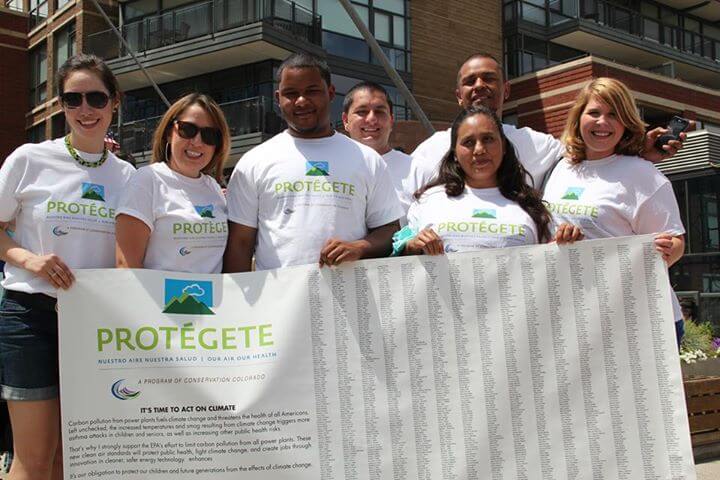 This year, Conservation Colorado launched Protégete: Our Air, Our Health. It is an important and timely effort to engage the Latino community around the issues of clean air and climate change.
This year, Conservation Colorado launched Protégete: Our Air, Our Health. It is an important and timely effort to engage the Latino community around the issues of clean air and climate change.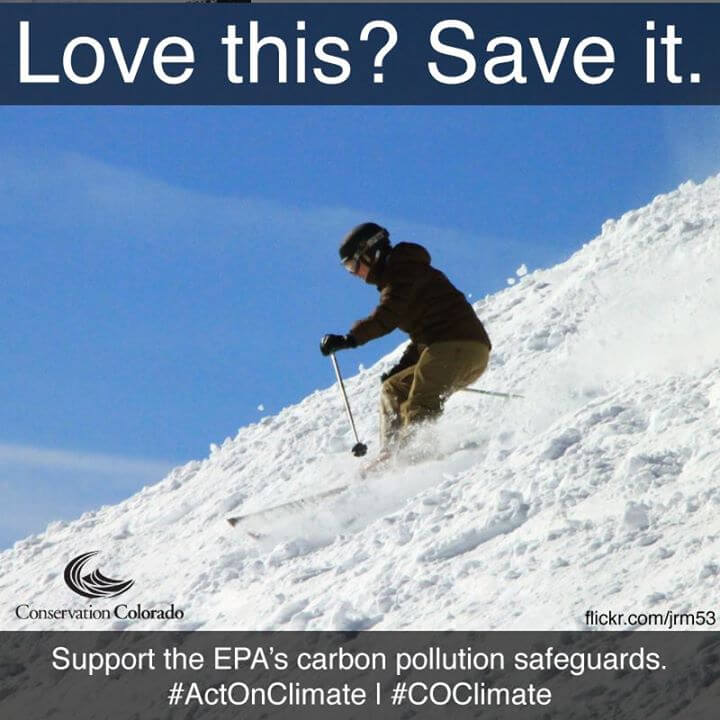 This year we took a huge step toward addressing the challenge of climate change. The Environmental Protection Agency (EPA) proposed national safeguards that aim to cut carbon pollution, One of just four hearings across the country was held right here in Colorado! Our coalition rallied over 250 Coloradans to testify at the hearings and came out on top — an overwhelming majority of the testimonies showed support of the EPA’s Clean Power Plan.
This year we took a huge step toward addressing the challenge of climate change. The Environmental Protection Agency (EPA) proposed national safeguards that aim to cut carbon pollution, One of just four hearings across the country was held right here in Colorado! Our coalition rallied over 250 Coloradans to testify at the hearings and came out on top — an overwhelming majority of the testimonies showed support of the EPA’s Clean Power Plan. Colorado sent a strong message to the nation in February – that every person deserves to breathe clean air. With your support, and after a year-long ground campaign, Colorado’s Air Quality Control Commission passed groundbreaking, first in the nation rules that directly regulate methane pollution from oil and gas facilities.
Colorado sent a strong message to the nation in February – that every person deserves to breathe clean air. With your support, and after a year-long ground campaign, Colorado’s Air Quality Control Commission passed groundbreaking, first in the nation rules that directly regulate methane pollution from oil and gas facilities.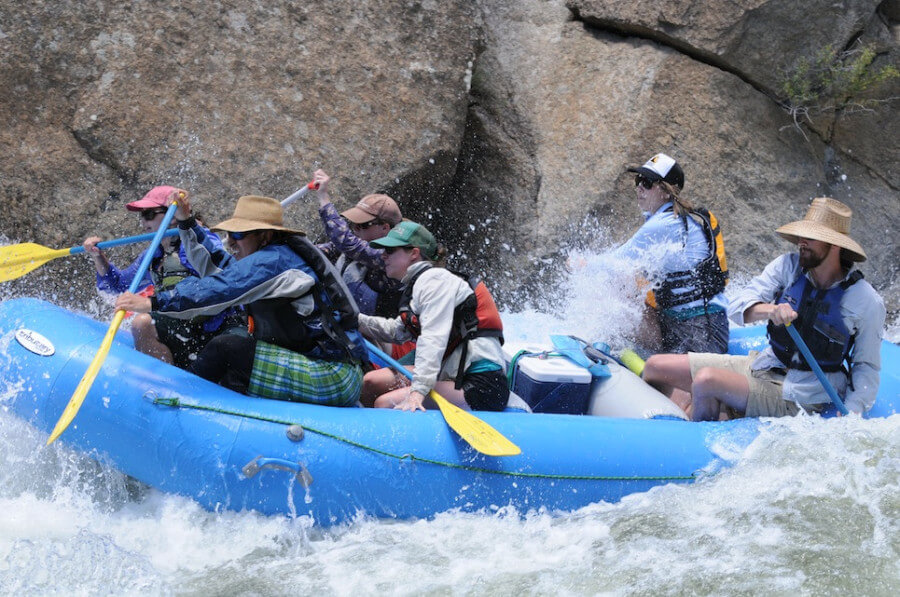
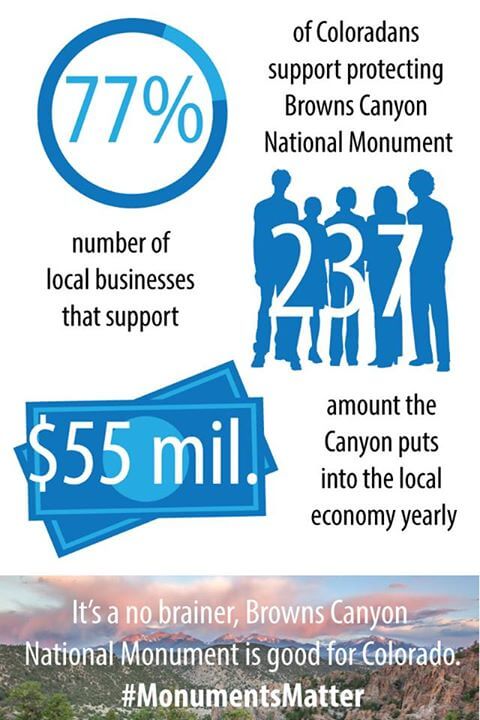 Conservation Colorado has worked with U.S. Senators Mark Udall and Michael Bennet for years to designate Browns Canyon as a national monument. This month, we brought this beautiful 22,000 acres of public lands around the Arkansas River to the forefront of President Obama’s attention and are optimistic that he will take the next step to finally protect Browns Canyon once and for all.
Conservation Colorado has worked with U.S. Senators Mark Udall and Michael Bennet for years to designate Browns Canyon as a national monument. This month, we brought this beautiful 22,000 acres of public lands around the Arkansas River to the forefront of President Obama’s attention and are optimistic that he will take the next step to finally protect Browns Canyon once and for all.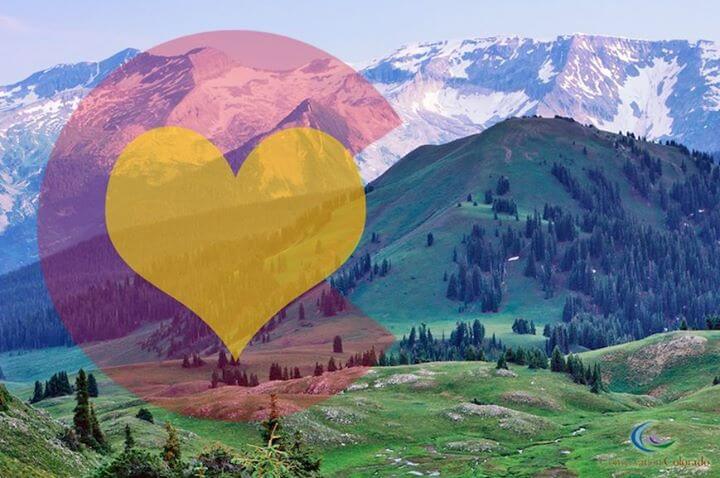 Conservation Colorado works hard to protect the land, air, and water of our beautiful state for YOU, our members. We are proud to have a growing membership of dedicated Coloradans who are willing to take action and support the work that will ensure clean air, healthy flowing waters, and protected lands for years to come. We do this work because we believe that it is your right to enjoy the outdoors as you see fit, without restrictions from out-of-state special interests and polluting industries. We do this work because of YOU.
Conservation Colorado works hard to protect the land, air, and water of our beautiful state for YOU, our members. We are proud to have a growing membership of dedicated Coloradans who are willing to take action and support the work that will ensure clean air, healthy flowing waters, and protected lands for years to come. We do this work because we believe that it is your right to enjoy the outdoors as you see fit, without restrictions from out-of-state special interests and polluting industries. We do this work because of YOU.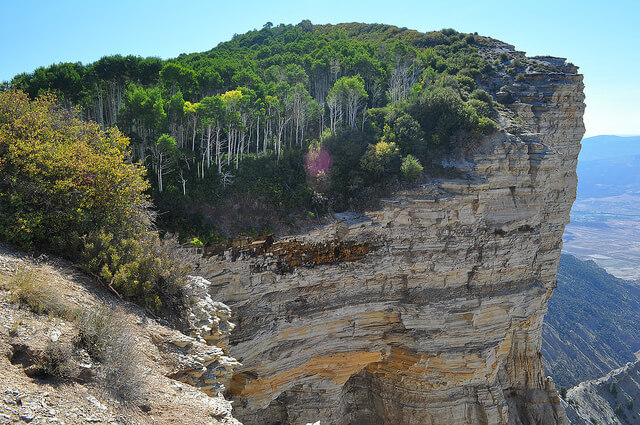 One thing kept popping up again and again, Roan Plateau. The same verbiage of deep woods laced with streams and critter filled meadows abounded. The descriptions and pictures were amazing, truly a place for the wild things I was seeking. Streams teeming with native trout; waterfalls cascading over cliffs; lush hanging gardens soaking in the spray; aspen glades echoing the bugle of bull elk–all of these scenes accurately depict the Roan Plateau. I, of course, tried to work Roan Plateau into every available opportunity into my interview, which wasn’t terribly applicable since the job was to work on Vermillion Basin and other areas in far Northwest Colorado. A few weeks later I was packing up and moving west, eager to protect places like the Roan.
One thing kept popping up again and again, Roan Plateau. The same verbiage of deep woods laced with streams and critter filled meadows abounded. The descriptions and pictures were amazing, truly a place for the wild things I was seeking. Streams teeming with native trout; waterfalls cascading over cliffs; lush hanging gardens soaking in the spray; aspen glades echoing the bugle of bull elk–all of these scenes accurately depict the Roan Plateau. I, of course, tried to work Roan Plateau into every available opportunity into my interview, which wasn’t terribly applicable since the job was to work on Vermillion Basin and other areas in far Northwest Colorado. A few weeks later I was packing up and moving west, eager to protect places like the Roan. The efforts around the Roan Plateau have been a game changer in so many ways. While the Colorado conservation community had united against Two Forks Dam in the foothills near Denver, it hadn’t really ever made a collective stand on a public land issue and let alone a public land issue on the rural West Slope. The Roan was the rallying point for Prius-driving environmentalists from Boulder and tobacco-chewing sportsman from Meeker and everyone in between. It wasn’t simply a NIMBY reaction, it was a collective recognition that we need places like Roan Plateau to exist for our own sake.
The efforts around the Roan Plateau have been a game changer in so many ways. While the Colorado conservation community had united against Two Forks Dam in the foothills near Denver, it hadn’t really ever made a collective stand on a public land issue and let alone a public land issue on the rural West Slope. The Roan was the rallying point for Prius-driving environmentalists from Boulder and tobacco-chewing sportsman from Meeker and everyone in between. It wasn’t simply a NIMBY reaction, it was a collective recognition that we need places like Roan Plateau to exist for our own sake.
